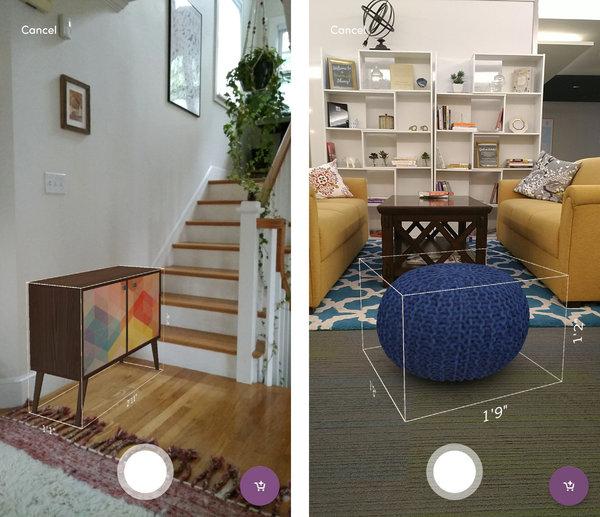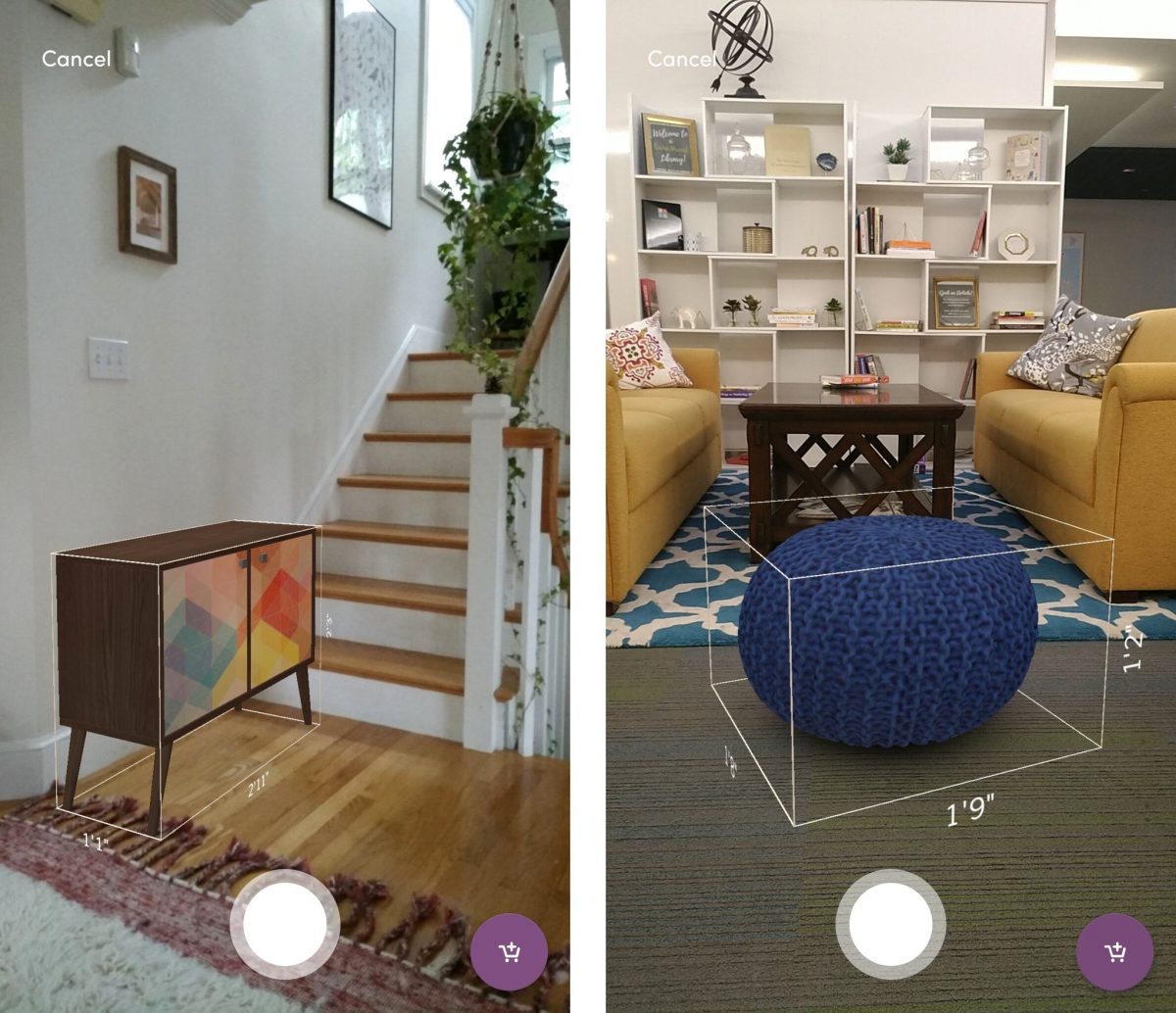The new furniture showroom might be your own living room.
Growing interest and investment in augmented reality technology are starting to give more shoppers the ability to see what a couch, a console or a coffee table will look like in their homes.
And furniture dealers have been trying to take advantage via their mobile apps. Last year, the digital home-goods and renovation platform Houzz added 3-D capability to its View in My Room augmented reality tool in its iOS and Android apps, and Ikea debuted an iOS app called Ikea Place. (An Android version of Ikea Place became available this year.)
Williams-Sonoma, the parent company of the Pottery Barn and West Elm brands, announced plans last year to buy Outward, a 3-D imaging and augmented reality software company, for $112 million.
“We see augmented reality as a transformative tool in improving the customer experience because it’s going to be able to help people better visualize,” said Laura Alber, the chief executive of Williams-Sonoma.
The company is testing a 3-D room planner that will let shoppers mix and match Pottery Barn and West Elm products, said Felix Carbullido, Williams-Sonoma’s chief marketing officer. It is also working with Facebook on a number of augmented reality News Feed campaigns.
In July, Facebook announced that it would start offering the ability to place augmented ads into News Feed. Accessories companies like Michael Kors and Warby Parker are already using the tool, which prompts users to open their camera so they can see how, say, a necklace or a pair of eyeglasses would look on them.
“Think about traditional marketing and how powerful sampling is,” said Karin Tracy, Facebook’s sales leader for the fashion and retail industries. “Now we have this virtual sampling happening in the palm of your hand.”
The online retail category that includes furniture, appliances and equipment grew by more than 20 percent on an annualized basis for eight of nine quarters through 2017, a pace that outstripped the overall increase in e-commerce, according to comScore.
Ms. Tracy said furniture retailers’ early adoption of 3-D imaging and “view in room” tools had created a customer base that was comfortable with this technology. “Their consumer is very used to engaging this way,” she said.
The advantage of putting the ads in Facebook feeds, Ms. Tracy said, is that it doesn’t require users to download a retailer’s app.
“Now we can find the right consumer in the right place at the right time,” she said. “Instead of waiting for a consumer to show up at your site, we can actually find consumers who are actively in the market for those kinds of products and create this purchase-intent experience right in News Feed.”

A big part of the task for companies using augmented reality is the proprietary process of creating 3-D visual representations — different from simply taking a photo — that can be scaled up or down to look proportionate when “installed” through a smartphone camera’s viewfinder.
People’s tendency to shares photos on social media could give the technology broader exposure, said Joe Derochowski, a home industry analyst and the executive director of the NPD Group, a market research firm.
“It can start to create conversation,” he said. “This is probably one of the bigger impact opportunities.”
Furniture retailers have known for some time that people are more comfortable buying a big-ticket or bulky item, like a dining set or a custom sectional, if they can virtually see it in their own space first, said Sucharita Kodali, an analyst and e-commerce expert at Forrester Research.
Still, Ms. Kodali cautioned that this kind of salesmanship was still in its early days, adding that augmented reality is one of many data points that online shoppers consider before making a purchase.
“As a best-case scenario, they are a supplement to other research a consumer does digitally,” she said.
Yet Jess Jacobs, marketing director for the online furniture store Wayfair, confirmed how the social effect can ripple outward. “When we’ve tested these models onto Facebook and other platforms, it gets a bunch of engagement,” she said, because people tag their friends to show off or ask for opinions about a potential new look.
Wayfair has had 3-D in-room imaging on its iOS app since last year and on the Android version since this spring, and Ms. Jacobs said the technology helped turn browsers into buyers.
“We find that people who engage with our 3-D view-in-room technology in our app are more likely to add an item to their cart. Some of our best customers are the ones engaging with this feature,” she said.
“There are many products where customers might have a question like, ‘How does this fit?’ or ‘How does this size of couch look?’” she added. “It allows us to answer that in a visual way.”
Wayfair’s new augmented reality campaign is to begin on Facebook later this year, and Ms. Jacobs said she expected the company’s push into immersive augmented reality ads to help differentiate Wayfair from competitors.
“That’s going to stand apart from the fray compared to your average photograph,” she said.
Facebook’s Ms. Tracy said, “It’s comparison shopping made much, much easier.”

